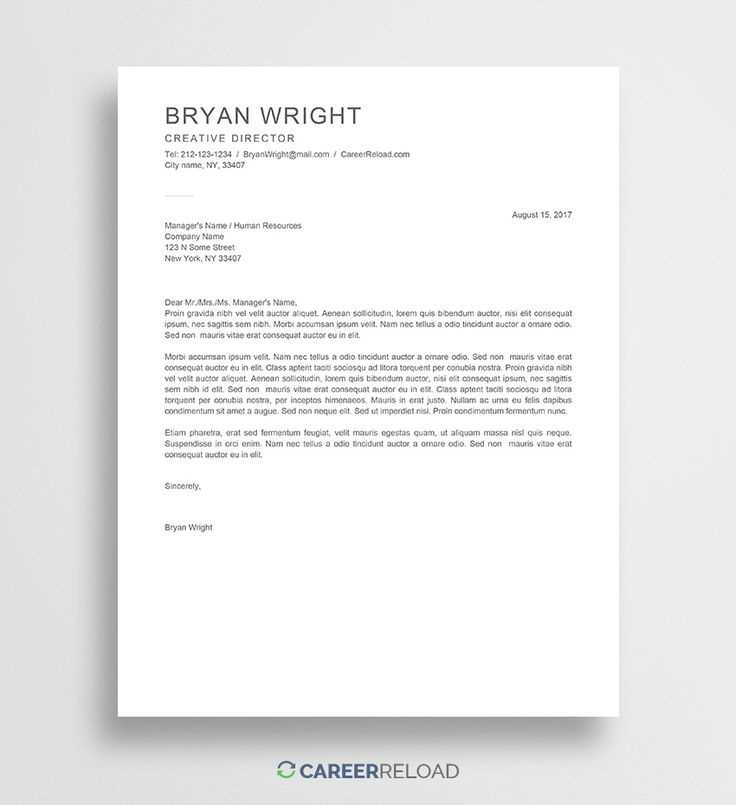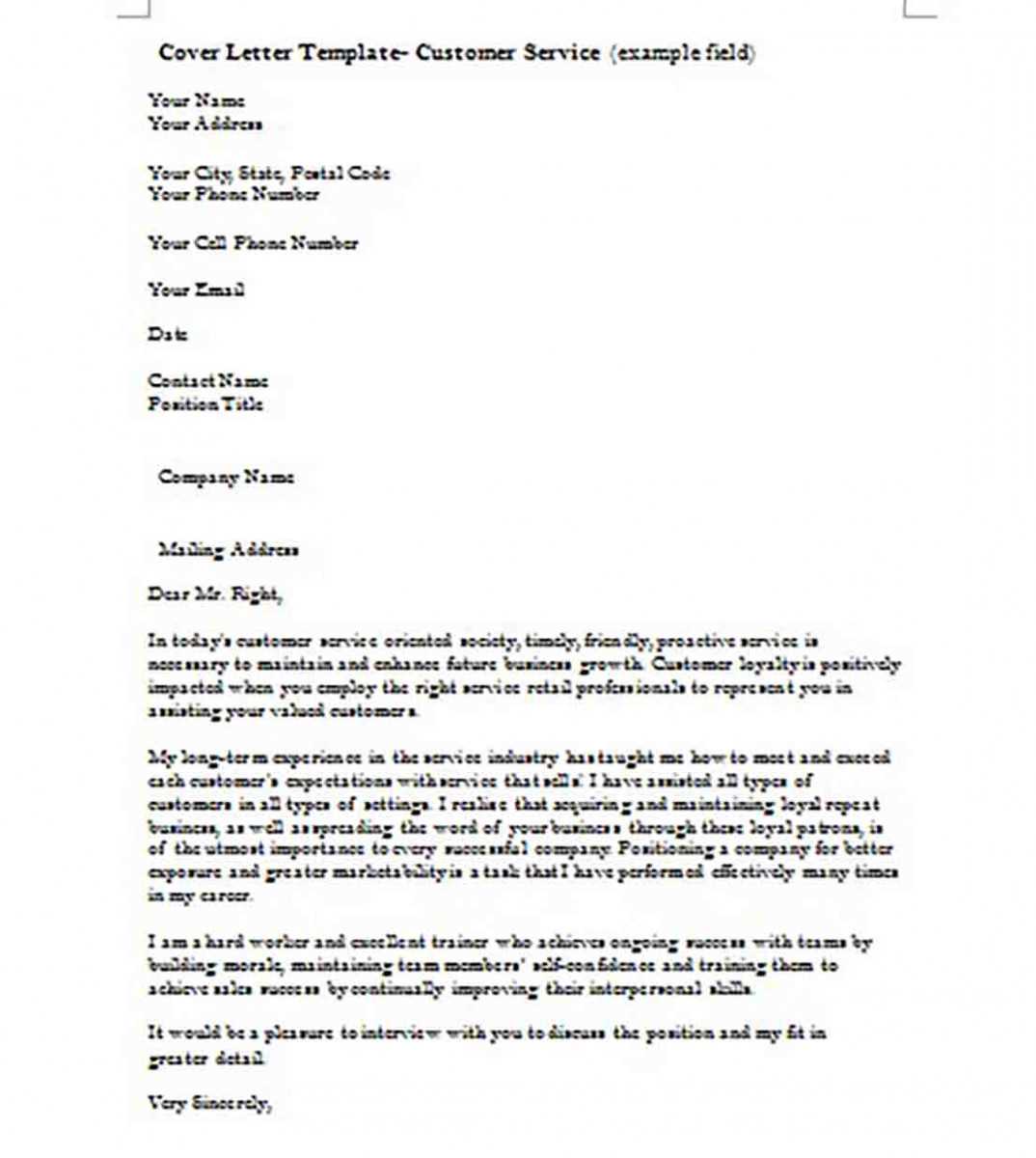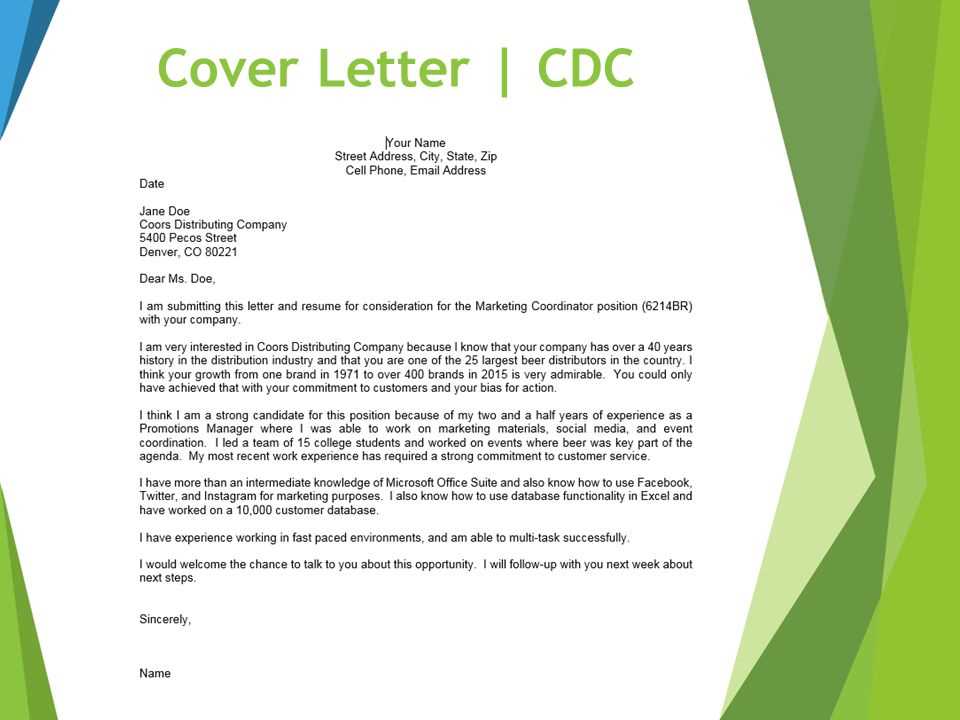Cover Letter Template for Your Job Application

Crafting a well-structured application letter is essential for making a strong impression on potential employers. It serves as an introduction to your skills, experience, and motivation for applying to a particular role. The key is to present your qualifications clearly while highlighting your enthusiasm for the position.
Key Elements to Include
A successful letter should include specific components that help recruiters quickly understand your value. The most important elements are:
- Personalized Greeting: Address the recipient directly, using their name if possible.
- Introduction: Briefly explain your interest in the role and how you learned about the position.
- Main Body: Showcase your relevant experience and skills, highlighting achievements that align with the job requirements.
- Closing: Express your enthusiasm for the role and your desire for further communication, including a call to action.
How to Tailor Your Letter
Customization is key to standing out. Tailoring your application letter to each role shows that you’ve done your research and are genuinely interested in the position. Consider the following tips:
- Research the Company: Mention specific details about the company that resonate with your professional values.
- Match Your Skills: Highlight experiences that directly correlate with the job description.
- Use Keywords: Incorporate industry-related terms and skills that reflect the job requirements.
Avoiding Common Mistakes
To ensure your application is well-received, avoid common errors that can undermine your message:
- Being too generic: A letter that feels like a copy-paste job lacks impact.
- Excessive length: Keep it concise and to the point–employers often skim through letters.
- Grammatical errors: Proofread carefully to ensure your letter is free of mistakes.
Formatting Your Application Letter
Well-structured formatting is crucial for readability and professionalism. Keep the following guidelines in mind:
- Use a clear and simple font, like Arial or Times New Roman.
- Maintain proper margins to avoid cluttered text.
- Align your text to the left for a clean, easy-to-read layout.
By following these tips and focusing on clarity, you can create an effective application letter that leaves a positive impression and increases your chances of securing an interview.
Why a Professional Application Letter is Essential
A well-crafted application letter is crucial for presenting yourself to potential employers in a compelling way. It allows you to showcase your qualifications, enthusiasm, and fit for the role, helping to create a positive first impression. In many cases, it’s your opportunity to go beyond a resume and connect personally with the hiring team.
Key Components of a Successful Application
An effective application letter should be structured and focused. Some of the key components to include are:
- Introduction: A concise statement that explains why you’re applying for the position and how you found out about it.
- Main Body: This is where you highlight your most relevant experiences, skills, and accomplishments, demonstrating why you’re the ideal candidate.
- Conclusion: End with a clear call to action, expressing your interest in discussing the opportunity further.
Customizing Your Letter for Each Role

To stand out, tailor each application letter specifically to the position. Mention the company by name and refer to key aspects of the job listing to demonstrate your knowledge and enthusiasm. Personalizing your approach shows you’re genuinely interested in the role, not just submitting a generic letter.
Avoiding Common Mistakes
Even the best applicants can make errors that hurt their chances. Some common pitfalls to avoid include:
- Being too vague: Avoid generic statements. Employers want to see how your skills match their specific needs.
- Excessive length: Keep your letter concise. Recruiters often skim, so brevity is essential.
- Grammatical errors: Typos and mistakes can undermine your professionalism, so proofread your letter carefully.
Adapting Your Letter for a Career Change
If you’re transitioning into a new industry, your application letter can help bridge the gap. Highlight transferable skills and explain how your previous experiences are relevant to the new role. Show your enthusiasm for the change and your commitment to learning.
Best Practices for Formatting Your Letter

Proper formatting makes your application letter easier to read and more professional. Here are some tips to follow:
- Keep it neat: Use a simple font and proper spacing to ensure clarity.
- Stay consistent: Align your text to the left and use standard margins for a polished look.
- Use clear headings: If you’re including multiple sections, use headings to guide the reader.